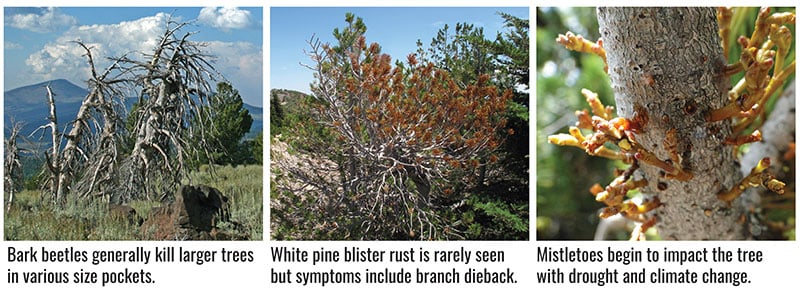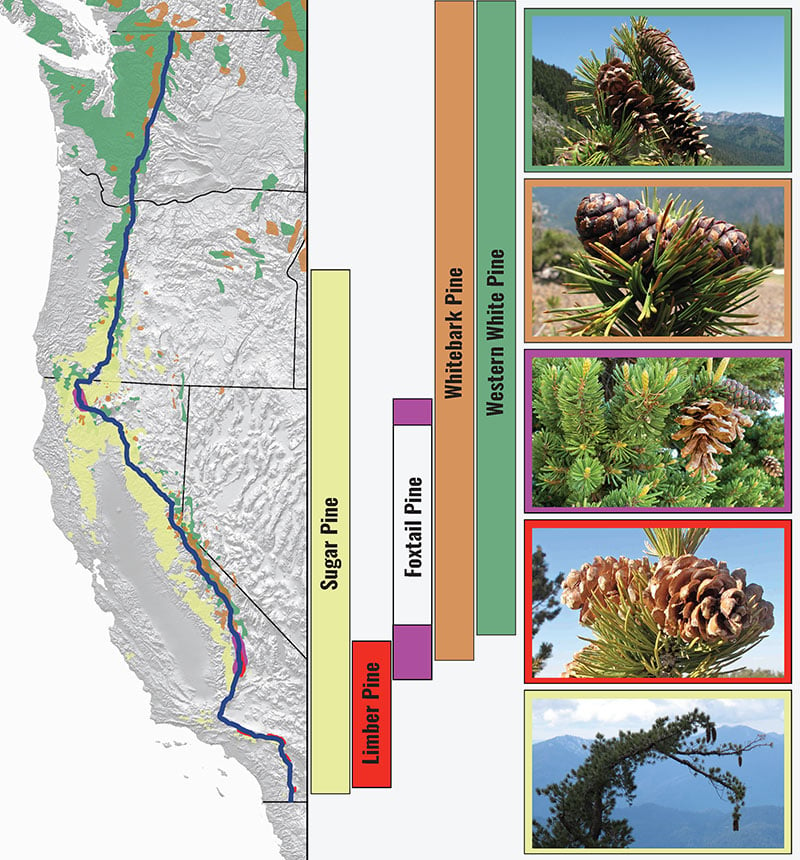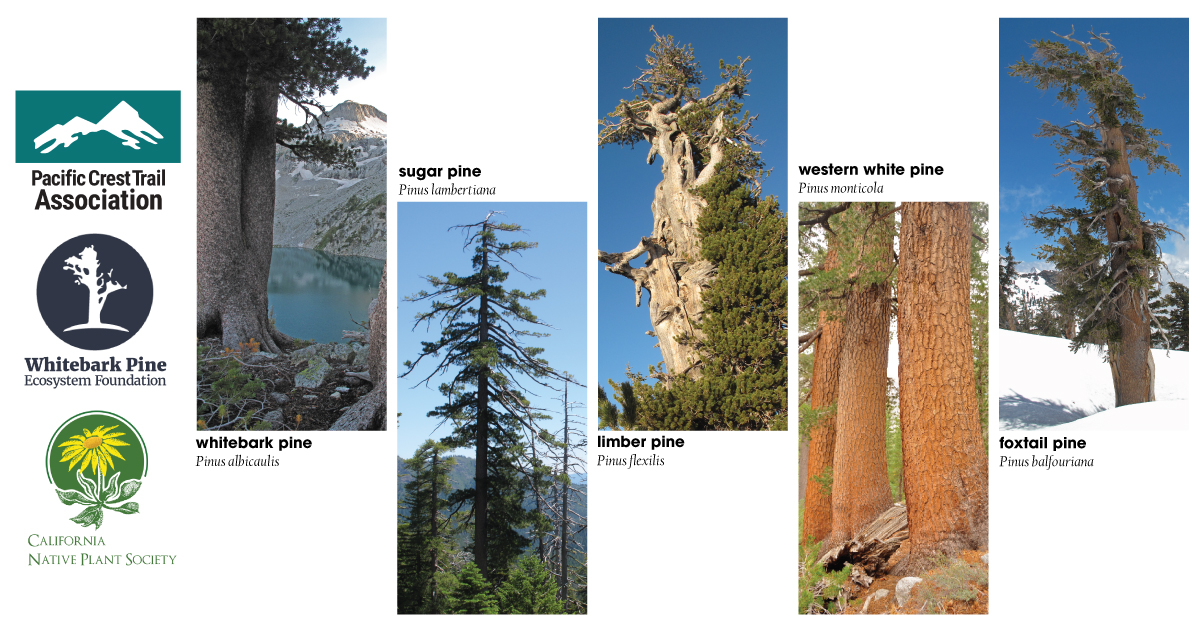As a board member of the Whitebark Pine Ecosystem Foundation, I decided to help cook up this project because all is not well with the five-needle pines of western North America.
Five-needle pines along the Pacific Crest Trail include the sugar pine, limber pine, foxtail pine, whitebark pine, and western white pine. Crucial to the mountain ecosystems where they occur, these trees face an uncertain future, and scientists are trying to learn more.
You can help and are invited
Whitebark Pine Ecosystem Foundation has partnered with the California Native Plant Society and the Pacific Crest Trail Association to raise awareness about the plight of five-needle pines and conduct this community science project. The goal is to get thru-, section-hikers, and everyone who visits to the trail to map and inventory five-needle pines along the Pacific Crest Trail.
By participating, you will help increase awareness of the changes affecting our world while improving connections to nature. Working together to document what’s happening is a positive step toward recovery.
Threats to 5-needle pines

Read the full article announcing the project
How to join the PCT 5-Needle Pines project
- Join iNaturalist and put the app on your phone. You can upload photos from your phone to the app or from a camera to iNaturalist using your computer at home.
- Join the “5-Needle Pines Along the Pacific Crest Trail” project.
- Take pictures of five-needle pines along the PCT. Include the whole tree, bark, and needle close-ups clearly showing the number of needles per bundle and cones (if present). If you don’t see cones, look closely around the base of the tree for cone fragments and photograph those (if present). If the tree is showing signs of decline like top or branch dieback, include a picture of that, too.
- Upload the photos for each of your tree observations to iNaturalist. Once an observation is uploaded, scroll down on the observation page and click on “Projects” on the right-hand side of the screen. Select the “5-Needle Pines Along the Pacific Crest Trail Project”. You can learn more about adding observations to iNaturalist projects here.
- Do your best to identify trees to the species level – but don’t worry, experts and iNaturalist can help with the right pictures.
- Spend even more time on the trail and add more observations. Thank you!
Resources
- Identification Guide to the 5-Needle Pines Along the Pacific Crest Trail (PDF)
- Identification Guide to the 5-Needle Pines of Western North America

5-needle pines along the PCT. Graphic by Michael Kauffmann courtesy of Backcountry Press.

Hi Michael…great project. A couple of quick notes: Foxtail pine in the Siskiyous occasionally has dwarf mistletoe that keys out as the same species that is fairly common on western white pine. Not surprising since they often occur near each other. The foxtail seems less susceptible.
Blister rust in foxtail in the 1970s was very rare with very few evident cankers. It is currently more prevalent and is producing aecium (blisters) with aecial and pycnial spore production in quantities not previously seen. Rodents chew the cankers, as pycnia are liquid and sweet, and their damage is a valuable diagnostic indicator. Flagging and small tree mortality is increasing. Uredia on Ribes is not common in most of the stands, but small quantities are found on Pedicularis and Paintbrush, verified by Det Vogler at PSW.
Whitebark is more susceptible in northern Cal, and small populations are already approaching extirpation. The Mount Shasta population is “OK”, with some rust, but sizable areas were lost in the Lava fire in 2021 on the NW side.